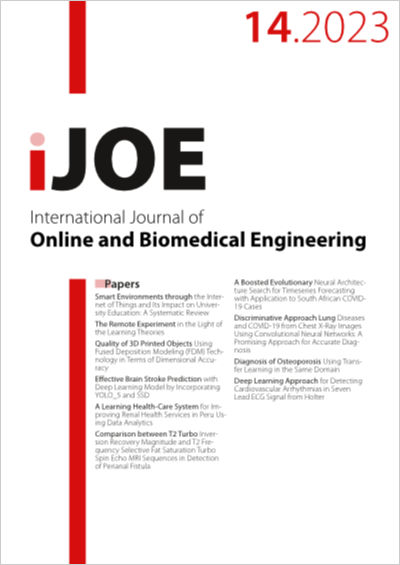Quality of 3D Printed Objects Using Fused Deposition Modeling (FDM) Technology in Terms of Dimensional Accuracy
DOI:
https://doi.org/10.3991/ijoe.v19i14.43761Keywords:
3D Printed, FDM Technology, FFF Technology, Accuracy of 3D Printed Parts, PLA.Abstract
3D printers are known for providing parts with relatively good accuracy. However, the level of accuracy in the dimensions of printed objects may not matter if they do not have a mechanical purpose. When multiple 3D-printed parts are intended to be integrated with each other to create a larger system, even a fraction of a millimeter can have a significant impact on the entire system. This study aims to investigate the variation in dimension when a single print file is replicated using the same slicing settings. The findings are then analyzed using quality control tools and compared to the designed measurements. Fused deposition modeling (FDM) technology or fused filament fabrication (FFF) technology was chosen for this study due to its availability to the common user, its relatively low cost, and its increasing popularity in different applications and industries. The material used in this study is polylactic acid (PLA) which is a thermoplastic and the most widely used plastic filament in 3D printing. It has a low melting point, high strength, low thermal expansion, and is relatively cheap. The dimensional accuracy of FDM-produced parts was evaluated by comparing the dimensions of the fabricated specimens with their computer-aided design (CAD) models. Statistical analysis revealed that the mean dimensional deviations were within the specified tolerance limits for most of the tested parts. This suggests that FDM technology is reliable in terms of achieving dimensional accuracy.
Downloads
Published
How to Cite
Issue
Section
License
Copyright (c) 2023 Alaa Aljazara, Nadine Abu Tuhaimer, Ahmed Alawwad, Khalid Bani Hani, Abdallah D. Qusef, Najeh Rajeh Alsalhi, Aras Al-Dawoodi

This work is licensed under a Creative Commons Attribution 4.0 International License.



